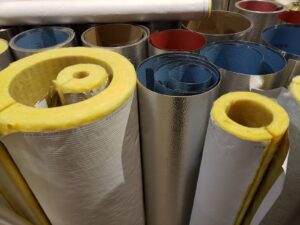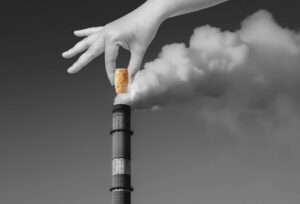Sustainable Solutions: How Mechanical Insulation Benefits the Environment
Since 2015, there has been a global effort to reduce carbon emissions to net zero by 2050 to avoid the worst impacts of climate change and to keep our planet livable.
For this reason, experts and scientists are constantly searching for new and better ways to save energy, reduce carbon production, and prevent the effects of greenhouse gas emissions. Many of these solutions are complex, still being researched, and ultimately take a long time to be effective.
However, there is one solution we can take advantage of today that provides immediate, highly effective, and measurable energy savings: Mechanical Insulation.
What Is It?
Many are familiar with building envelope insulation and home insulation.

These are typically installed inside the walls and roofs of buildings to help regulate interior temperatures, and reduce heating and cooling costs.
Instead of insulating the building itself, mechanical insulation insulates the equipment or processes inside of buildings. The uses of mechanical insulation are extensive and include: cold and hot water piping, HVAC applications, refrigeration lines, and various other applications found in industrial, residential, and commercial structures.
Mechanical insulation, by and large, accomplishes the same goals as other insulation applications. However, its potential tends to be overlooked compared to other energy saving measures.
How Does It Help?
According to a study by the National Insulation Association (NIA), energy savings from properly installed mechanical insulation between the years of 2017-2021 alone totaled around $91 billion across the country. In just the year 2022, it saved $25.2 billion! The study goes even further, estimating that between 2017-2027, these savings will total up to $278.3 billion.
Saving on energy costs is nice, but what about the environmental impact? Turns out mechanical insulation pulls its weight there as well. For example: to offset the amount of carbon produced by a pickup truck over 20,000 miles, you could plant 360 trees, switch 310 lightbulbs, OR insulate 8 feet of pipe running at 350 degrees Fahrenheit.
In fact, NIA estimates that over this 11-year window, mechanical insulation could reduce 7.5 billion metric tons of carbon emissions. This equates to about 9 billion acres of forest, which would be enough to cover the United States 3.7 times over!
These findings highlight the significant financial benefits of investing in mechanical insulation. They emphasize its crucial role in enhancing energy efficiency, and its ability to reduce costs on a national scale.
Importance of Insulation Upkeep
Proper inspection and maintenance is an important part of seeing mechanical insulation’s full potential. Most installations hidden behind walls and ceilings, which can lead to an “out of sight, out of mind” attitude. According to NIA, this leads to between 10-30% of installations being damaged or missing.
Keeping mechanical insulation up to code doesn’t just help with energy savings and carbon emissions. It also lowers surface temperatures of exposed ductwork and piping, and provides a layer of fire prevention and noise reduction, making workplaces and other structures overall safer.
This underscores the necessity of regular inspection and maintenance to ensure the integrity and effectiveness of mechanical insulation systems. Without proper oversight, these benefits can be significantly diminished.
With the amount of energy saved, and with an investment payback of just 6 months to 2 years, you can’t afford not to invest in proper mechanical insulation. You can even visit NIA’s website to find out how to have a Certified Insulation Energy Appraiser document your potential savings. Investing in mechanical insulation today ensures significant cost savings and energy efficiency for the future.
How Ideal Can Help
If you’re installing or updating your facility’s mechanical insulation, Ideal Tape® offers a variety of products to help you get the job done. Our ASJ, FSK, and PSK tapes can assist in sealing seams and joints on duct and pipe insulation systems. Meanwhile, our Ideal Shield® jacketing is your all-weather warrior helping you fight back against mother nature by protecting externally insulated duct work from water intrusion.
Ideal’s plain foil tapes, reinforced tapes, and jacketing are built to meet the industry’s toughest specifications, and we have the credentials to prove it! Our products are UL 723 rated, UL Classified, and U.S. Coast Guard approved. On top of that, Ideal Tape is also a proud member of the National Insulation Association.



